Home>Storage Ideas>Living Room Storage>14 Easy Cleaning Habits You Can Start Today For A Spotless Home
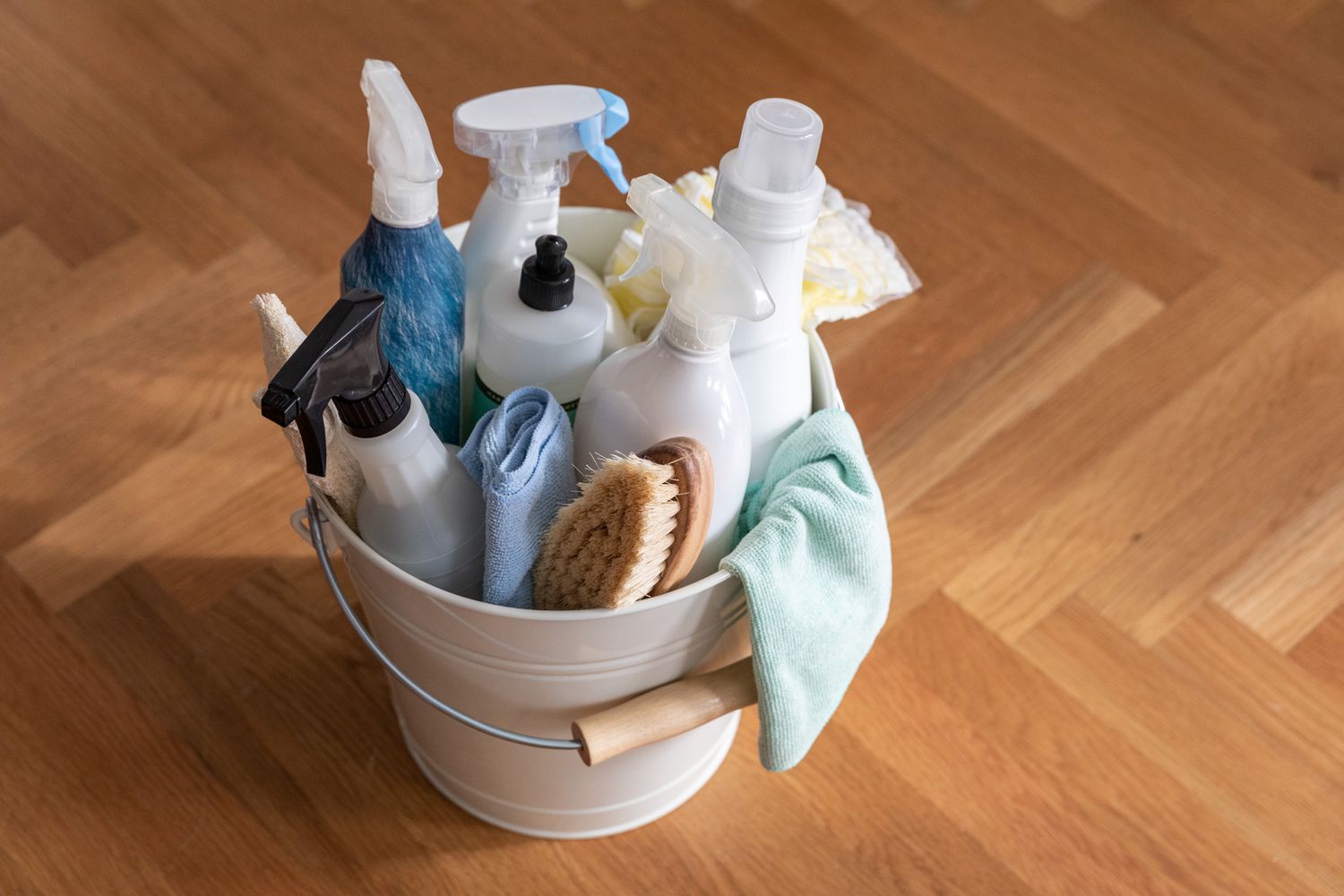

Living Room Storage
14 Easy Cleaning Habits You Can Start Today For A Spotless Home
Modified: January 18, 2024
Discover 14 simple cleaning habits to effortlessly maintain a spotless home starting today. Upgrade your living room storage with these easy tips.
(Many of the links in this article redirect to a specific reviewed product. Your purchase of these products through affiliate links helps to generate commission for Storables.com, at no extra cost. Learn more)
Introduction
Keeping a spotless home is a goal that many of us aspire to, but it often feels like an overwhelming task. The thought of spending hours on end cleaning and organizing can be daunting, especially with the busy lives we lead. However, maintaining a clean and organized living space doesn’t have to be a time-consuming and exhausting ordeal. By incorporating a few easy cleaning habits into your daily routine, you can keep your home looking fresh and tidy with minimal effort.
In this article, we will explore 14 simple cleaning habits that you can start today to achieve a spotless home. These habits are designed to be easily incorporated into your daily life, allowing you to maintain a clean and organized living space without feeling overwhelmed. From making your bed in the morning to deep-cleaning one area each week, these habits will help you stay on top of the cleaning tasks and create a serene environment in your home.
The key to successful home cleaning habits is consistency. By developing a routine and sticking to it, you can ensure that your home stays clean and clutter-free on a regular basis. These habits are not meant to be tedious or time-consuming; instead, they are designed to be quick and efficient, fitting seamlessly into your daily schedule.
In addition to improving the appearance of your home, maintaining a clean and organized living space has numerous benefits. A spotless home can reduce stress, increase productivity, and create a sense of calm and tranquility. It also promotes better health by eliminating dust, allergens, and germs that can affect your well-being.
Whether you live in a small apartment or a spacious house, these cleaning habits can be adapted to fit any living space. You don’t need fancy cleaning supplies or expensive equipment; just a few basic tools and a commitment to maintaining a tidy home.
So let’s dive in and discover the 14 easy cleaning habits that you can start implementing today to achieve a spotless and welcoming home. By incorporating these habits into your daily routine, you’ll soon find that keeping a clean and organized home is both achievable and enjoyable.
Key Takeaways:
- Consistent implementation of simple cleaning habits, such as making the bed daily and wiping down countertops, can lead to a spotless and serene home environment without feeling overwhelmed by cleaning tasks.
- Regular deep-cleaning of one area each week, along with habits like changing bed sheets weekly and organizing frequently, ensures a consistently clean and inviting living space while minimizing the effort required for cleaning.
Make Your Bed Every Morning
One of the simplest and most impactful cleaning habits you can adopt is making your bed every morning. This small task takes just a few minutes but sets the tone for the rest of the day. When you make your bed, you instantly create a sense of order and tidiness in your bedroom.
Besides making your room look neat, making your bed has psychological benefits as well. It gives you a sense of accomplishment right at the start of the day, which can motivate you to tackle other tasks. It also helps to create a peaceful and serene environment, allowing you to relax and unwind when you return to your room at the end of the day.
To make your bed effectively, start by straightening the fitted sheet and top sheet. Smooth out any wrinkles and ensure the sheets are tucked in securely. Then, fluff up your pillows and arrange them neatly. Finally, pull up the duvet or comforter and smooth it out for a finished look.
By making your bed a daily priority, you’ll create a visually appealing and organized space. Plus, it’s a simple habit that can be completed in just a few minutes, making it easy to incorporate into your morning routine.
Aside from the aesthetic benefits, making your bed also helps maintain cleanliness. When you cover your bed, you prevent dust, pet hair, and other debris from settling on the sheets and mattress. It also discourages pests like dust mites from making a home in your bed.
Overall, making your bed every morning is a simple and effective cleaning habit that pays off in multiple ways. It enhances the visual appeal of your bedroom, promotes a sense of accomplishment, and contributes to a clean and organized living space. So start your day off right and make your bed – you’ll be amazed at the positive impact it has on your surroundings and mindset.
Wipe Down Countertops After Each Use
Countertops are one of the most commonly used surfaces in our homes, and they can quickly become magnets for dirt, crumbs, and spills. To maintain a spotless and sanitary kitchen or bathroom, it’s essential to develop the habit of wiping down your countertops after each use.
By wiping down your countertops immediately after cooking or preparing meals, you can prevent the build-up of food particles and stains. This not only keeps your countertops looking clean and polished but also helps maintain their quality over time. Certain liquids and substances, such as acidic juices or oils, can damage the surface if left sitting for too long.
To effectively clean your countertops, start by removing any loose debris or crumbs with a damp cloth or sponge. Then, use a gentle cleaning solution appropriate for your countertop material. For example, mild dish soap and warm water work well for most surfaces, while granite or marble countertops may require specialized cleaners. Avoid abrasive cleaners that can scratch the surface.
When wiping down your countertops, pay attention to edges and corners where dirt and grime tend to accumulate. Don’t forget to clean any appliances or utensils that may have come into contact with the surface as well. A thorough wipe-down not only improves the appearance of your countertops but also helps maintain a hygienic environment by preventing the growth of bacteria and germs.
Developing the habit of wiping down your countertops after each use may require a bit of discipline at first, but it quickly becomes second nature. It only takes a few seconds to grab a cloth or sponge and give your countertops a quick clean, but the impact on the cleanliness and overall appearance of your kitchen or bathroom is significant.
By consistently following this habit, you’ll be able to enjoy a clutter-free and inviting space, while also reducing the time and effort spent on deep cleaning sessions. Plus, you’ll find that your entire home feels more organized and tidy when your countertops are free of clutter and grime.
So, make it a point to wipe down your countertops after each use, and you’ll be rewarded with a sparkling and well-maintained kitchen or bathroom that you can be proud of.
Wash Dishes Immediately
Leaving a sink full of dirty dishes not only creates an unsightly mess but also attracts pests and can lead to unpleasant odors in your kitchen. To maintain a spotless home, develop the habit of washing dishes immediately after use.
Washing dishes promptly not only keeps your kitchen looking clean and organized but also ensures a healthier and more hygienic environment. Food residue left on dishes can attract bacteria and pests, increasing the risk of foodborne illnesses and unwanted critter infestations. By washing dishes immediately, you eliminate these potential health hazards and maintain a safer living space for you and your family.
To effectively wash dishes, start by scraping off any leftover food into the trash or compost bin. Then, fill the sink with warm soapy water and submerge the dirty dishes to soak. This helps to loosen any stubborn residue and makes the cleaning process easier. While the dishes soak, you can wipe down the stove, countertops, and other surfaces to multitask and maximize efficiency.
Once the dishes have soaked for a few minutes, pick up a sponge or dishcloth and start scrubbing. Pay attention to any greasy or sticky spots, as they may require a bit more effort to remove. Rinse each dish thoroughly under running water to remove any soap residue. Finally, set the dishes in a dish rack or towel to air dry or dry them manually with a clean dishcloth.
By washing dishes immediately after use, you prevent the buildup of dirty dishes and the temptation to procrastinate cleaning them. This habit ensures that your kitchen stays organized and free of clutter, making meal preparation and cooking more efficient and enjoyable.
In addition to the aesthetic benefits, washing dishes promptly also promotes positive mental well-being. It’s a small task that provides a sense of accomplishment and contributes to a visually pleasing and functional living space. The act of washing dishes can even be therapeutic, allowing you to focus on the task at hand and unwind after a long day.
If you have a dishwasher, you can still apply this habit by promptly loading dirty dishes into the machine after each meal. Empty the dishwasher as soon as the cycle is complete to prevent the accumulation of clean dishes that need to be put away.
Incorporating the habit of washing dishes immediately into your daily routine may require a bit of discipline initially, but the benefits are well worth it. You’ll enjoy a clean and organized kitchen, minimize the risk of pests and bacteria, and experience a greater sense of well-being in your home.
So, make it a priority to wash dishes immediately after use, and you’ll be rewarded with a spotless kitchen and a more enjoyable cooking and dining experience.
Sort and Dispose of Mail
Mail can quickly pile up and create clutter if left unattended. To maintain a clean and organized living space, it’s important to develop the habit of sorting and disposing of mail as soon as it enters your home.
Firstly, designate a dedicated area for sorting mail, such as a countertop or desk. When you bring in the mail, immediately sort it into different categories: bills, important documents, junk mail, and magazines/catalogs. Separating mail into these categories allows you to prioritize and efficiently handle each type.
Start by opening and reviewing any bills or important documents. Set aside those that require immediate attention, such as bills that need to be paid or documents that require a response. Create a system for organizing these items, such as a filing system or a designated folder.
Next, dispose of any junk mail or unwanted flyers that you have no use for. Recycling bins are ideal for disposing of paper waste. If you receive a lot of unwanted mail, consider opting out of mailing lists or signing up for electronic statements to minimize unnecessary paper clutter.
Take a moment to browse through any magazines or catalogs you receive. If you find articles or items of interest, tear them out and recycle the rest. Consider storing these clippings in a designated folder or bulletin board for future reference.
By sorting and disposing of mail as it arrives, you prevent it from accumulating and overtaking your living space. This habit ensures that your home remains clutter-free and organized, making it easier to locate important documents and reducing the risk of misplacing or losing important information.
Another benefit of sorting and disposing of mail promptly is reducing the mental burden of a cluttered space. Clutter has been linked to increased stress levels and decreased productivity. By staying on top of your mail, you create a more peaceful and productive environment in your home.
To further streamline the process, consider going paperless for bills and other important documents whenever possible. Many service providers offer electronic billing options, which not only save paper but also reduce the likelihood of misplacing important documents. Set up email alerts to remind yourself to pay bills or respond to important emails promptly.
In summary, the habit of sorting and disposing of mail is crucial for maintaining a clean and organized living space. By promptly reviewing, categorizing, and disposing of mail, you prevent the accumulation of clutter, reduce stress, and increase productivity. So, take a few moments each day to sort through your mail, and you’ll enjoy a clutter-free and well-organized home.
Read more: Wiring Your Home For Today’s Electronics
Put Away Shoes and Coats
One of the easiest ways to maintain a clean and organized entryway or living space is to develop the habit of putting away shoes and coats immediately upon entering your home. This simple task takes only a few seconds but can create a significant impact on the cleanliness and overall appearance of your home.
When we come home after a long day, it’s tempting to kick off our shoes and leave them lying around or hang our coats on the nearest available surface. However, doing so quickly leads to clutter and can make it difficult to find what we need when we’re rushing out the door.
To implement this habit effectively, designate a specific area for shoes and coats. This could be a shoe rack or a small closet near the entrance. As soon as you enter your home, take a moment to put your shoes away in their designated spot and hang your coat on a coat rack or hanger. If you tend to accumulate multiple pairs of shoes, consider investing in a shoe storage solution, such as a shoe cabinet or over-the-door organizer, to keep them organized and out of sight.
By putting away shoes and coats immediately, you not only keep your living space tidy but also prevent dirt and debris from being tracked throughout your home. Shoes carry dirt, germs, and potentially harmful substances from the outside, and leaving them scattered around can result in a less sanitary living environment. Hanging coats prevents them from becoming wrinkled or falling on the floor, preserving their appearance and making them readily accessible when you need to leave the house.
Additionally, putting away shoes and coats promotes a sense of order and organization in your home. It creates a welcoming atmosphere and sets a positive tone that carries through the rest of your living space. It also makes it easier to locate and access your belongings, saving you time and reducing stress when you’re in a hurry.
By taking a few seconds to put away shoes and coats upon entering your home, you establish a habit that contributes to a clean and clutter-free living environment. It not only helps to maintain the visual appearance of your home but also streamlines your routine, making it easier to find what you need and navigate your space with ease.
So, make it a habit to put away shoes and coats as soon as you enter your home, and you’ll enjoy a neat and organized entryway that sets the tone for the rest of your living space.
Clean Spills and Stains Right Away
Spills and stains are inevitable mishaps that can quickly tarnish the appearance of your furniture, carpets, or other surfaces if left unattended. To maintain a spotless and clean home, it’s crucial to develop the habit of cleaning up spills and addressing stains as soon as they occur.
When a spill happens, whether it’s a glass of wine on the carpet or a sauce splatter on the kitchen counter, it’s essential to act swiftly. The longer a spill sits, the more it can seep into the surface and become stubborn to remove. By addressing spills immediately, you increase the chances of completely removing the stain and prevent it from setting in.
The first step in cleaning a spill is to blot it with a clean cloth or paper towel. Avoid rubbing the spill, as this can spread the stain or push it deeper into the material. Instead, gently blot the area to absorb as much liquid as possible. If the spill is solid or sticky, use a spoon or a blunt knife to lift it off.
Once you’ve blotted the spill, treat it with an appropriate cleaner or stain remover. Different surfaces and materials may require specific cleaning solutions, so check the manufacturer’s guidelines or consult a professional cleaning product for the best removal method. Apply the cleaner to the stained area and use a clean cloth or sponge to gently blot or scrub the stain in a circular motion. Rinse the area with water and blot it dry with a clean towel.
By addressing spills and stains immediately, you prevent them from becoming permanent eyesores in your home. This habit helps to maintain the cleanliness and longevity of your furniture, carpets, and other surfaces, extending their lifespan and saving you from the expense of replacement.
Additionally, cleaning spills promptly helps to maintain a hygienic living space. Spills can attract bacteria and germs, and if left uncleaned, they can pose health risks, especially if they occur in the kitchen or eating areas. By addressing spills right away, you reduce the chances of bacteria growth and create a healthier environment for you and your family.
Remember, prevention is key in avoiding spills and stains. Use coasters or placemats to protect surfaces from drink rings or food spills. Be mindful when cooking and take necessary precautions to avoid splattering hot liquids and sauces. By being proactive in preventing spills, you can minimize the occurrences and the effort required for cleaning.
In summary, the habit of cleaning spills and stains immediately is crucial for maintaining a spotless and clean home. By acting swiftly, using appropriate cleaning methods, and being proactive in prevention, you can effectively address spills and stains, ensuring a visually appealing and hygienic living environment. So, make it a habit to clean spills right away, and you’ll enjoy a home that is free from stubborn stains and looks pristine at all times.
Sweep or Vacuum Floors Daily
Keeping your floors clean is essential for maintaining a spotless and hygienic home. To achieve this, it’s important to develop the habit of sweeping or vacuuming your floors daily. This simple task not only removes dirt, dust, and debris but also enhances the overall appearance of your living space.
Sweeping or vacuuming your floors daily prevents the buildup of dirt and allergens, which can lead to respiratory issues or trigger allergies. By removing dust and debris from the floor surface, you create a cleaner and healthier environment for you and your family.
Start by selecting the appropriate cleaning tool for your type of flooring. For hard floors like tile, laminate, or hardwood, a broom or a dry mop can effectively remove loose dirt and dust. For carpeted areas, a vacuum cleaner with suitable attachments is the best choice to ensure a thorough clean.
When sweeping or vacuuming, pay attention to corners, edges, and hard-to-reach areas where dirt tends to accumulate. Move furniture if needed to access hidden spots. For high-traffic areas, such as entryways or kitchen floors, you may need to sweep or vacuum more frequently to maintain cleanliness.
To maximize efficiency, establish a daily routine for floor cleaning. Choose a time that works best for you, whether it’s in the morning or evening, and make it a part of your daily or weekly cleaning regimen. Consistency is key to keeping your floors in pristine condition and preventing dirt from building up.
In addition to regular sweeping or vacuuming, make it a habit to address spills or messes immediately. If something is spilled on the floor, clean it up promptly to prevent stains or stickiness. By tackling spills quickly, you can prevent them from seeping into the floor and becoming more difficult to remove.
Remember to clean your cleaning tools as well. Empty the vacuum cleaner regularly and clean or replace the broom bristles if necessary. This ensures the effectiveness of your cleaning tools and prevents dirt from being redistributed on your floors.
By incorporating the habit of sweeping or vacuuming your floors daily, you not only maintain a cleaner and healthier living space but also save time in the long run. Regular cleaning prevents dirt and debris from accumulating, reducing the need for deep cleaning sessions and prolonging the life of your flooring.
So, make it a priority to sweep or vacuum your floors daily. This simple habit will contribute to a cleaner and more attractive home, while also creating a healthier living environment for you and your family.
Use a squeegee to quickly remove water spots and soap scum from shower doors and tiles after each use, preventing buildup and making cleaning easier.
Dust Surfaces Regularly
Dusting surfaces regularly is an essential cleaning habit that helps maintain a clean and healthy home. Dust accumulates on various surfaces over time, including furniture, shelves, electronics, and decor items. By developing the habit of dusting regularly, you can eliminate allergens, improve air quality, and enhance the overall appearance of your living space.
Dust consists of tiny particles such as dead skin cells, pollen, pet dander, and dust mites, which can trigger allergies or respiratory issues if left unchecked. Regular dusting helps to reduce the presence of these allergens, creating a healthier environment for you and your family.
To effectively dust surfaces, start by gathering the necessary tools, such as a microfiber cloth, a duster, or a soft brush. These tools are designed to attract and trap dust efficiently. Avoid using feather dusters or dry towels, as they tend to spread dust around rather than capturing it.
When dusting, work from top to bottom, starting with higher surfaces and working your way down. Begin by dusting shelves, ledges, and tall furniture items. Pay attention to areas that are often overlooked, such as the tops of bookshelves, picture frames, and window sills.
Next, move on to surfaces at eye level, such as tables, countertops, and cabinets. Use the appropriate cleaning tool to gently wipe away dust, ensuring that you reach all corners and crevices. Remember to dust both the top and sides of furniture items.
Don’t forget to dust electronic devices as well. Use a soft cloth or a specialized electronic duster to remove dust from screens, keyboards, and other gadgets. Dust can accumulate on these surfaces and affect their performance over time, so regular cleaning is crucial.
For hard-to-reach areas or delicate items, use a vacuum cleaner with a brush attachment. This allows you to effectively remove dust without the risk of damaging fragile objects or straining yourself reaching inaccessible spots.
In addition to traditional dusting, consider using a microfiber cloth or duster that can be used dry or slightly damp. These tools trap dust particles effectively without the need for cleaning solutions. If you prefer to use a cleaning solution, choose a gentle one that is suitable for the surfaces you are dusting.
By incorporating regular dusting into your cleaning routine, you can prevent dust buildup and maintain a cleaner and more attractive living environment. Not only does this habit contribute to improved air quality and reduced allergens, but it also enhances the appearance of your home by removing dulling layers of dust.
Remember to dust surfaces regularly, ideally at least once a week, to maintain a dust-free home. However, if you have severe allergies or live in a particularly dusty environment, more frequent dusting may be necessary.
So, make it a habit to dust surfaces regularly. Your home will not only look cleaner and more appealing but also provide a healthier and more enjoyable living space for you and your family.
Clean Bathroom Fixtures Weekly
Cleaning bathroom fixtures regularly is crucial for maintaining a clean and hygienic bathroom. The moisture and frequent use in bathrooms can lead to the buildup of dirt, grime, and bacteria on fixtures such as sinks, faucets, showers, and toilets. By developing the habit of cleaning these fixtures weekly, you can ensure a sparkling and sanitary bathroom environment.
Start by gathering the necessary cleaning supplies, including bathroom cleaner, disinfectant, a scrub brush or sponge, and a microfiber cloth. Before you begin cleaning, ensure that the bathroom is well-ventilated to prevent the inhalation of cleaning fumes.
To clean bathroom fixtures effectively, follow these steps:
1. Sinks: Apply a bathroom cleaner or a mixture of water and vinegar to the sink surface. Use a scrub brush or sponge to gently scrub away any stains or buildup. Pay attention to the edges, corners, and drain area. Rinse thoroughly with water and wipe dry with a microfiber cloth.
2. Faucets and Showerheads: Soak a cloth or sponge in a mixture of equal parts water and vinegar or a mild bathroom cleaner. Gently scrub the fixtures, focusing on removing any mineral deposits or soap scum. Pay attention to hard-to-reach areas and ensure you clean around the base of the faucet handles. Rinse with water and wipe dry with a microfiber cloth.
3. Showers and Bathtubs: Apply an appropriate bathroom cleaner to the shower walls and bathtub surface. Use a scrub brush or sponge to thoroughly scrub away soap scum, mineral deposits, and mold or mildew stains. Rinse the area with water and wipe dry with a microfiber cloth or squeegee. Don’t forget to clean the shower or bathtub fixtures as well.
4. Toilets: Apply toilet cleaner to the inside of the bowl and let it sit for a few minutes. Use a toilet brush to scrub the bowl, paying attention to stains or buildup near the waterline. Clean the outer surface of the toilet, including the tank, seat, and base, using a disinfectant cleaner and a cloth or sponge. Rinse the brush and flush the toilet to clean the brush thoroughly.
Regularly cleaning bathroom fixtures not only keeps them looking clean and shiny but also helps prevent the buildup of bacteria and mold, ensuring a more hygienic bathroom environment. Additionally, maintaining clean fixtures reduces the need for deep cleaning and helps extend the lifespan of the fixtures.
To make the task easier and more efficient, consider using multi-purpose cleaners or wipes specifically designed for bathroom surfaces. These products can help streamline the cleaning process and save you time.
By incorporating the habit of cleaning bathroom fixtures weekly, you’ll enjoy a cleaner and more pleasant bathroom experience. Not only will your fixtures look polished and well-maintained, but you’ll also create a healthier environment for yourself and your family.
So, make it a priority to clean your bathroom fixtures regularly. With a little effort and consistency, you’ll achieve a sparkling and sanitary bathroom that enhances the overall cleanliness and appeal of your home.
Empty Trash Bins Regularly
Emptying the trash bins is a necessary cleaning habit to maintain a clean and odor-free home. Trash bins can quickly accumulate waste, food scraps, and other debris, creating an unpleasant and unhygienic environment if left unattended. By developing the habit of emptying your trash bins regularly, you can keep your home clean, fresh, and free from unwanted odors.
Start by identifying the various trash bins in your home, such as those in the kitchen, bathroom, and other living areas. Each bin may serve different purposes, so it’s important to address them individually. Assess the level of fill and determine which ones require immediate attention.
When emptying the trash bins, follow these steps:
1. Gather the necessary supplies, such as trash bags, gloves, and cleaning wipes. It’s a good idea to keep spare trash bags nearby for easy replacement.
2. Tie up the existing trash bag securely or remove it from the bin. Be careful not to let any spills or debris escape from the bag.
3. Dispose of the filled trash bag in your outdoor garbage bin or the designated area for collection. If you have a compost bin, separate organic waste and dispose of it appropriately.
4. Wipe down the inside of the trash bin with a disinfecting wipe or a damp cloth. This removes any remaining residue or odors and keeps the bin clean and sanitary.
5. Replace the trash bag with a fresh one, ensuring it fits securely inside the bin. Make sure to properly fasten or tie the bag to prevent leaks or spills.
It’s important to empty your trash bins regularly, especially in the kitchen where food waste can quickly become a breeding ground for bacteria and pests. Aim to empty the kitchen trash bin daily or as needed to prevent odors and potential health hazards. Bathroom and other living area bins can be emptied less frequently, depending on their usage.
Besides maintaining cleanliness, regularly emptying trash bins also provides convenience. When your bins are not overflowing, it’s easier to dispose of waste without messy spills or having to force items into an already full bin. Plus, it prevents the odors from spreading in your home, creating a more pleasant living environment.
To streamline the process, consider implementing a recycling system in your home as well. Separate recyclable materials such as paper, plastic, glass, and metal into separate bins. This reduces waste and helps contribute to a more eco-friendly lifestyle.
By incorporating the habit of regularly emptying your trash bins, you’ll enjoy a cleaner, more hygienic, and odor-free home. Taking a few minutes each day to address this task ensures that your home remains tidy and provides a healthier living environment for you and your family.
So, make it a priority to empty your trash bins regularly. By doing so, you’ll create a clean and inviting living space that is free from unwanted odors and promotes overall cleanliness.
Organize and Declutter Frequently
Organizing and decluttering your living space is an essential habit for maintaining a clean and stress-free home. Over time, belongings can accumulate, leading to clutter and a disorganized environment. By developing the habit of organizing and decluttering frequently, you can create a more spacious, visually appealing, and functional living space.
Begin by setting aside dedicated time to tackle each area of your home. Start with one room or a specific area within a room, focusing on sorting through belongings and decluttering any unnecessary items. Be prepared to let go of possessions that no longer serve a purpose or bring you joy.
Sort items into categories such as keep, donate, sell, or discard. Take a critical look at each item and ask yourself if it’s something you truly need or value. If it’s been untouched or unused for an extended period, consider parting ways with it.
When organizing, employ storage solutions that maximize space and keep items tidy and accessible. Use shelves, bins, baskets, or drawer organizers to group similar items together and maintain order. Label containers to easily identify their contents, reducing the need to search through multiple items.
Not only does decluttering create a more aesthetically pleasing environment, but it also offers numerous advantages. A decluttered space reduces visual distractions and promotes a sense of calm and relaxation. It also makes it easier to clean and maintain a spotless home since there are fewer items to dust and move around during cleaning sessions.
Furthermore, decluttering can have a positive impact on your mental well-being. Studies have shown that living in an organized and clutter-free space can reduce stress levels and improve productivity. By removing excess belongings, you create a more peaceful and focused atmosphere, allowing you to better enjoy your living space.
To maintain an organized and clutter-free home, it’s important to make decluttering a regular habit. Set aside dedicated time every few weeks or months to reassess your possessions, identify areas that need attention, and implement organizational systems where needed. By consistently decluttering, you can prevent the accumulation of unnecessary items and ensure that your home remains tidy and welcoming.
Remember, organizing and decluttering doesn’t have to be an overwhelming task. Break it down into smaller, manageable segments and focus on one area at a time. Celebrate your progress along the way, and don’t hesitate to seek support or guidance if needed.
In summary, organizing and decluttering frequently is an essential habit for maintaining a clean, inviting, and stress-free living space. By regularly reassessing your possessions, implementing effective storage solutions, and letting go of unnecessary items, you create a more visually appealing, functional, and serene home environment.
So, make it a point to organize and declutter frequently. Embrace the benefits of a clutter-free space and enjoy the peace of mind that comes with maintaining an organized and tidy home.
Wipe Down Electronics and Appliances
Keeping electronics and appliances clean is an important aspect of maintaining a spotless and well-functioning home. Dust, dirt, and smudges can accumulate on surfaces, interfering with their performance and making them appear unsightly. By developing the habit of regularly wiping down your electronics and appliances, you can not only improve their longevity but also enhance the overall cleanliness of your living space.
Start by gathering the necessary supplies for cleaning, such as microfiber cloths, a mild cleaning solution, and cotton swabs. Before cleaning, ensure that all electronics and appliances are powered off and disconnected from their power source to avoid any risks.
When cleaning electronics, such as televisions, computer monitors, or laptops, use a clean, dry microfiber cloth to gently wipe away dust and smudges. Avoid using excessive pressure or harsh cleaning agents, as this can damage the screens. For stubborn smudges, lightly dampen the cloth with a mixture of water and a mild cleaning solution, specifically formulated for electronic screens.
For appliances with exterior surfaces, such as refrigerators, ovens, or microwaves, start by removing any loose debris or spills with a dry cloth. Then, dampen a cloth with a mild cleaning solution and wipe down the surfaces, paying attention to handles, buttons, and other areas prone to fingerprints or grime.
Don’t forget about smaller electronics and appliances, such as remote controls, phones, or kitchen gadgets. These items come into contact with our hands frequently and can harbor bacteria. Use a damp cloth or disinfecting wipes to wipe down the surfaces, being cautious not to let any liquid penetrate the internal components.
For appliances like vacuums or air purifiers, follow the manufacturer’s instructions for cleaning and maintenance. Regularly emptying and cleaning the dust collection containers or replacing filters ensures optimal performance and extends the lifespan of these appliances.
Regularly wiping down electronics and appliances offers several benefits. Firstly, it helps to remove dust, allergens, and bacteria that can accumulate on surfaces and affect air quality. Secondly, it prevents the buildup of grime that can impede the functionality and appearance of the devices. Lastly, it contributes to a clean and visually appealing home environment.
Make it a habit to incorporate the cleaning of electronics and appliances into your regular cleaning routine. Depending on usage and the environment, aim to clean them at least once a month or more frequently if needed. By consistently wiping down these items, you’ll not only prolong their lifespan but also enjoy a cleaner and healthier living space.
Remember to refer to manufacturer guidelines for specific cleaning instructions, as certain devices may require specialized cleaning solutions or techniques. Additionally, take precautions when cleaning electrical appliances to ensure your safety.
In summary, regularly wiping down electronics and appliances is an essential habit for maintaining a clean, functional, and aesthetically pleasing home. By paying attention to these items and keeping them free from dust and grime, you create a more hygienic living environment while preserving the lifespan of your technology.
So, make it a priority to wipe down electronics and appliances regularly. With a little effort, you’ll enjoy a spotless home and ensure that your devices and appliances continue to perform at their best.
Read more: When Can You Start Construction
Change Bed Sheets Weekly
Changing bed sheets regularly is a crucial habit for maintaining a clean and comfortable sleeping environment. Our beds accumulate sweat, dead skin cells, and other bodily fluids over time, creating the perfect breeding ground for dust mites and bacteria. By developing the habit of changing your bed sheets weekly, you can promote better sleep, improve hygiene, and extend the lifespan of your bedding.
Start by setting a consistent day each week as your designated “bed sheet change” day. This will help you stay on track and ensure that you don’t forget to change your sheets. Strip off the dirty sheets from your bed, including the pillowcases, and gather them for washing.
When washing your bed sheets, follow manufacturer instructions for proper care. Use a suitable laundry detergent, and select the appropriate water temperature and cycle settings. Separating light and dark-colored sheets is advisable to prevent color bleeding. Consider using a gentle cycle for delicate fabrics or those with special care requirements.
After washing, thoroughly dry the bed sheets according to the manufacturer’s recommendations. Ideally, aim for complete dryness to prevent musty odors or the growth of mold and mildew. If possible, hang them out to dry in the sun for natural disinfection and fresh air.
Once your bed sheets are clean and dry, make your bed with freshly washed sheets. Tuck them tightly under the mattress, ensuring a smooth and snug fit. As you make your bed, take the opportunity to fluff pillows, straighten blankets, and arrange decorative accents for a neat and inviting appearance.
Changing bed sheets weekly offers numerous benefits. Firstly, it improves hygiene by removing built-up sweat, dead skin cells, and allergens that accumulate over time. This can help reduce the risk of skin irritations, allergies, and respiratory issues. Secondly, it provides a fresh and inviting sleeping environment, enhancing your overall comfort and quality of sleep. Lastly, it contributes to the longevity of your bedding, as regular washing and proper care can prevent premature wear and tear.
To simplify the process, consider having multiple sets of bed sheets on hand, allowing for a quick change while the dirty sheets are being washed. This way, you always have clean bed sheets available, even if laundry schedules fluctuate.
Remember, pillowcases should also be changed regularly to maintain optimal hygiene. Pillowcases come into direct contact with our faces and hair, absorbing oils, sweat, and bacteria. Changing them weekly or more frequently if needed helps prevent skin issues and keeps our sleep area fresh and clean.
In summary, changing bed sheets weekly is an essential habit for maintaining a clean and healthy sleeping environment. By dedicating a specific day each week to this task, you promote better sleep, improve hygiene, and extend the lifespan of your bedding.
So, make it a priority to change your bed sheets weekly. Embrace the benefits of a clean and fresh sleeping environment, and enjoy a more comfortable and rejuvenating night’s sleep.
Deep-Clean One Area Each Week
Deep-cleaning is an important aspect of maintaining a pristine home, but it can be overwhelming to tackle all areas at once. To make deep-cleaning more manageable and less daunting, it’s beneficial to develop the habit of deep-cleaning one area or room each week. This systematic approach allows you to maintain a clean and organized home without feeling overwhelmed by the cleaning tasks.
Start by creating a schedule and designating a specific area or room to deep-clean each week. This could be the kitchen one week, the living room the next, and so on. Determine what needs to be done in each area, and make a list of tasks to tackle during the deep-clean.
When deep-cleaning an area, focus on both decluttering and thoroughly cleaning the space. Remove any items that don’t belong or are no longer needed, and organize any remaining items in their designated places. Dust surfaces, wipe down furniture, clean windows and mirrors, vacuum or sweep the floors, and mop if necessary. Pay attention to details, such as baseboards, light fixtures, and behind furniture.
In the kitchen, deep-cleaning may involve cleaning appliances, organizing the pantry, scrubbing the stovetop and oven, and disinfecting countertops and sinks. In the bathroom, it may involve scrubbing the shower or bathtub, sanitizing the toilet, and organizing cabinets or drawers. Each area of your home has its specific deep-cleaning requirements, so tailor your tasks accordingly.
Incorporate deep-cleaning tasks that are often overlooked, such as cleaning ceiling fans, dusting light fixtures, or washing curtains or blinds. These tasks may not need to be done weekly, but incorporating them into your deep-cleaning routine ensures they are addressed regularly.
By deep-cleaning one area each week, you maintain a clean and organized home throughout the year. This systematic approach prevents the accumulation of dirt and clutter in neglected areas, ensuring a consistently clean and welcoming environment. Additionally, breaking the deep-cleaning tasks into smaller, manageable segments makes the process more achievable and less overwhelming.
Consider enlisting the help of family members or housemates to share the deep-cleaning tasks. This not only lightens the workload but also allows everyone to contribute to maintaining a clean and tidy living space.
Remember, deep-cleaning doesn’t have to be limited to weekly tasks. You can also set aside time for seasonal or annual deep-cleaning tasks, such as cleaning out the garage, washing windows, or shampooing carpets. These more extensive cleaning sessions can be scheduled based on your availability and the specific needs of your home.
In summary, deep-cleaning one area or room each week is an effective habit for maintaining a clean and organized home. By dividing deep-cleaning tasks into manageable segments, you can consistently address cleaning needs without feeling overwhelmed. This approach ensures that your entire home receives thorough attention, promoting a clean and inviting living space.
So, make it a priority to deep-clean one area each week. With consistent effort and a systematic approach, you’ll enjoy a clean and well-maintained home that you can take pride in.
Conclusion
Maintaining a clean and organized living space is not only visually appealing but also contributes to a healthier and more enjoyable home environment. By developing the habits outlined in this article, you can achieve a spotless home while minimizing the time and effort required for cleaning tasks.
Making your bed every morning sets a positive tone for the day and creates a sense of order. Wiping down countertops after each use prevents the buildup of dirt and bacteria, while washing dishes immediately maintains a clean and hygienic kitchen. Sorting and disposing of mail regularly reduces paper clutter and keeps your home organized.
Putting away shoes and coats prevents clutter and keeps your entryway tidy. Cleaning spills and stains right away prevents them from becoming permanent eyesores. Sweeping or vacuuming floors daily eliminates dust and debris, improving air quality. Dusting surfaces regularly reduces allergens and creates a clean and serene environment.
Cleaning bathroom fixtures weekly ensures a hygienic and sanitary space. Regularly emptying trash bins prevents odors and promotes cleanliness. Organizing and decluttering frequently minimizes clutter and enhances the overall appearance of your home. Wiping down electronics and appliances keeps them clean and functioning optimally.
Finally, changing bed sheets weekly improves sleep hygiene and prolongs the life of your bedding. Deep-cleaning one area each week ensures that your entire home receives attention and stays consistently clean.
By embracing these habits and incorporating them into your daily routine, you can maintain a spotless home without feeling overwhelmed by cleaning tasks. Each habit plays a vital role in creating a clean, organized, and welcoming living space that supports your well-being and offers a sense of peace and tranquility.
Remember, consistency is key in maintaining a clean home. While it may require a little extra effort initially, over time these habits will become second nature, allowing you to effortlessly maintain a pristine living space.
So, start implementing these habits today and enjoy the benefits of a clean and organized home. Your living environment will not only look impeccable but also provide a healthy and inviting space for you, your family, and your guests to enjoy.
Frequently Asked Questions about 14 Easy Cleaning Habits You Can Start Today For A Spotless Home
Was this page helpful?
At Storables.com, we guarantee accurate and reliable information. Our content, validated by Expert Board Contributors, is crafted following stringent Editorial Policies. We're committed to providing you with well-researched, expert-backed insights for all your informational needs.

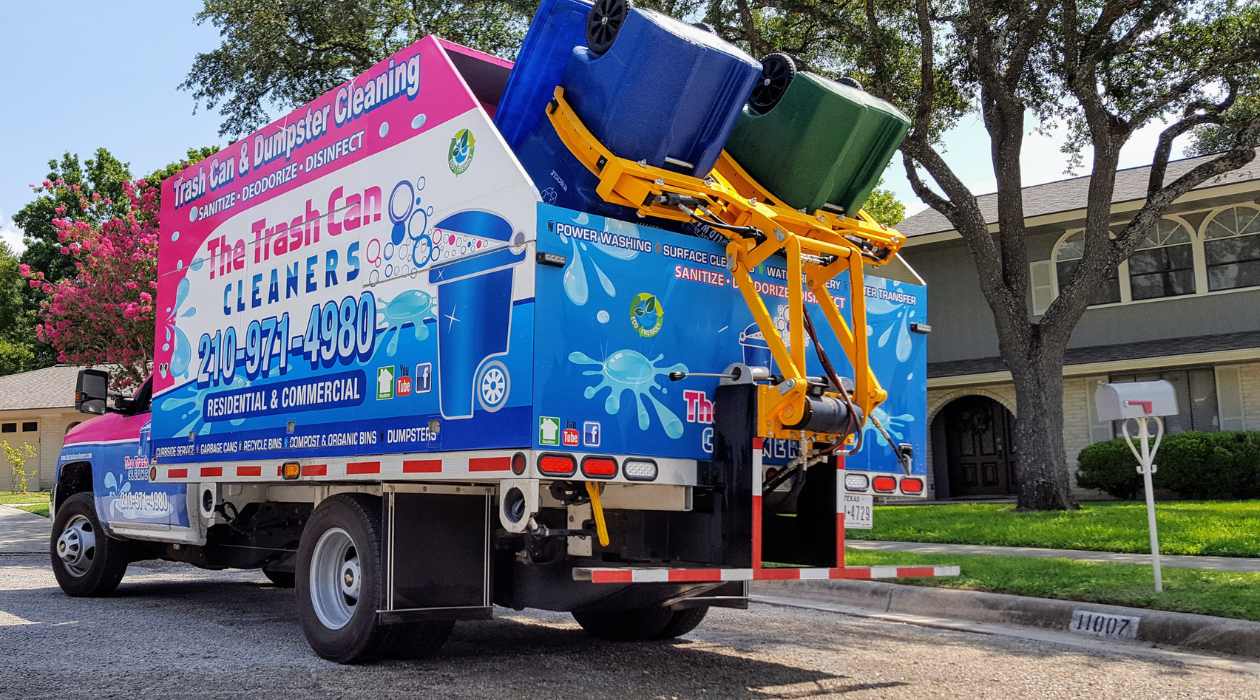
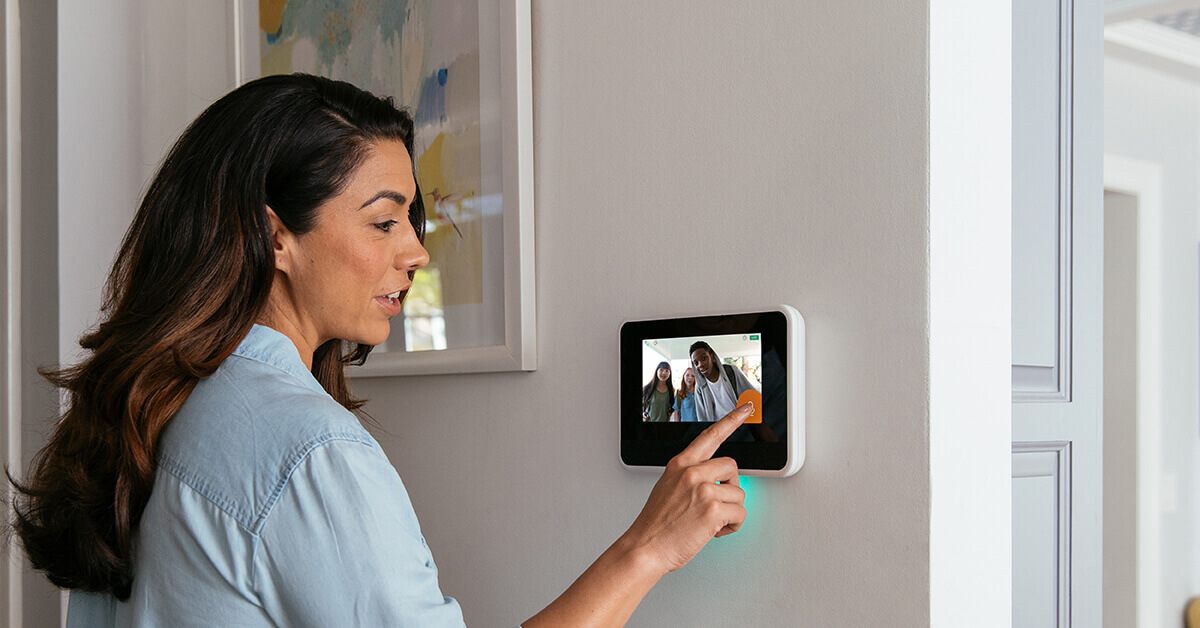
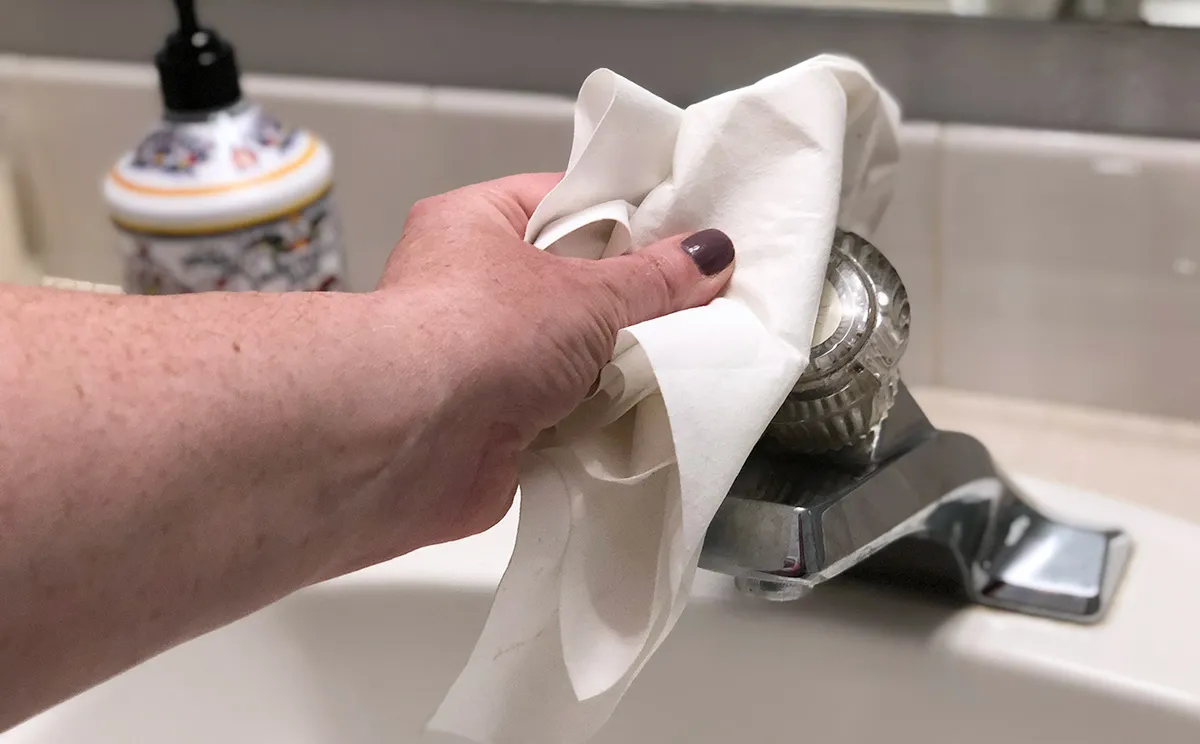
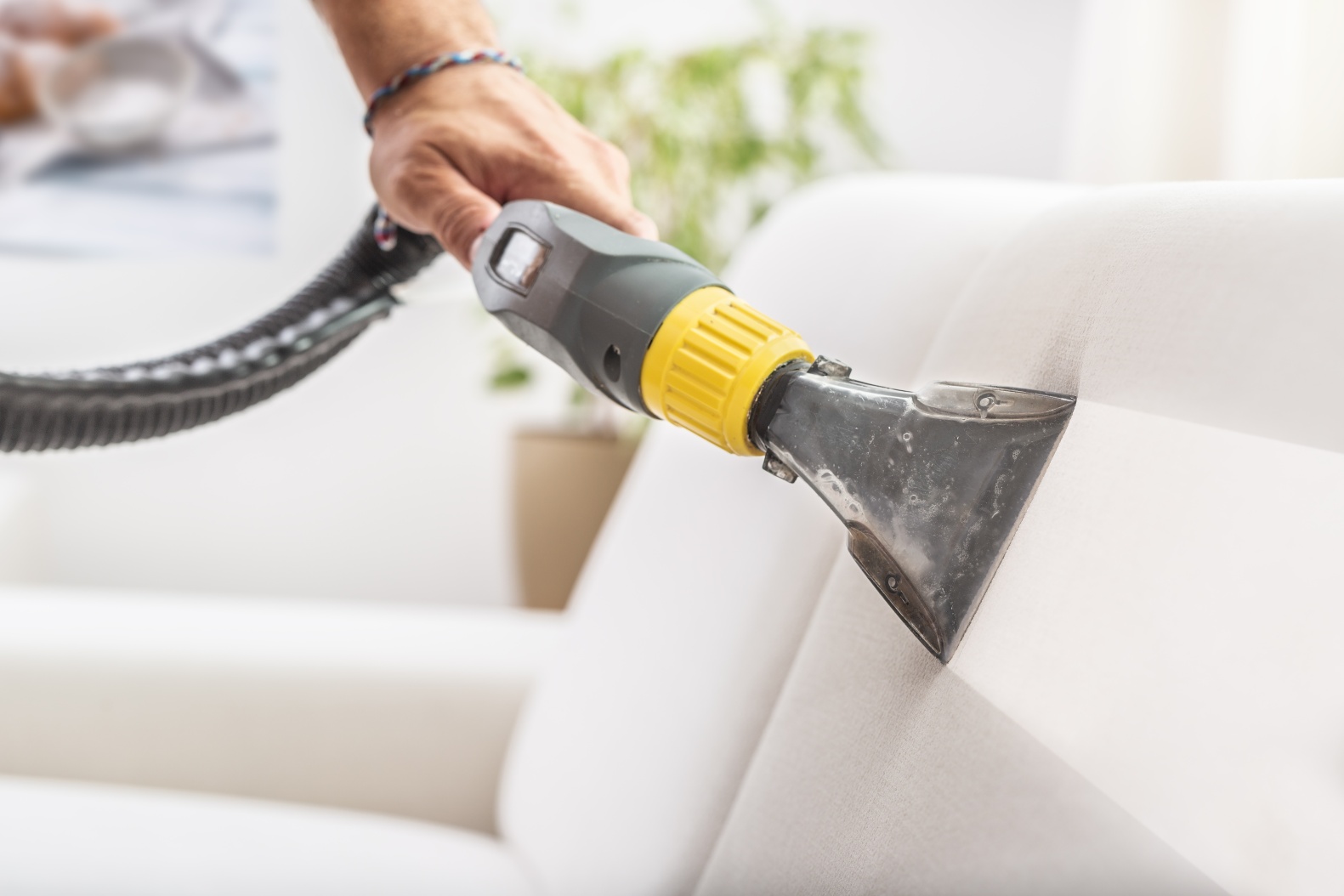
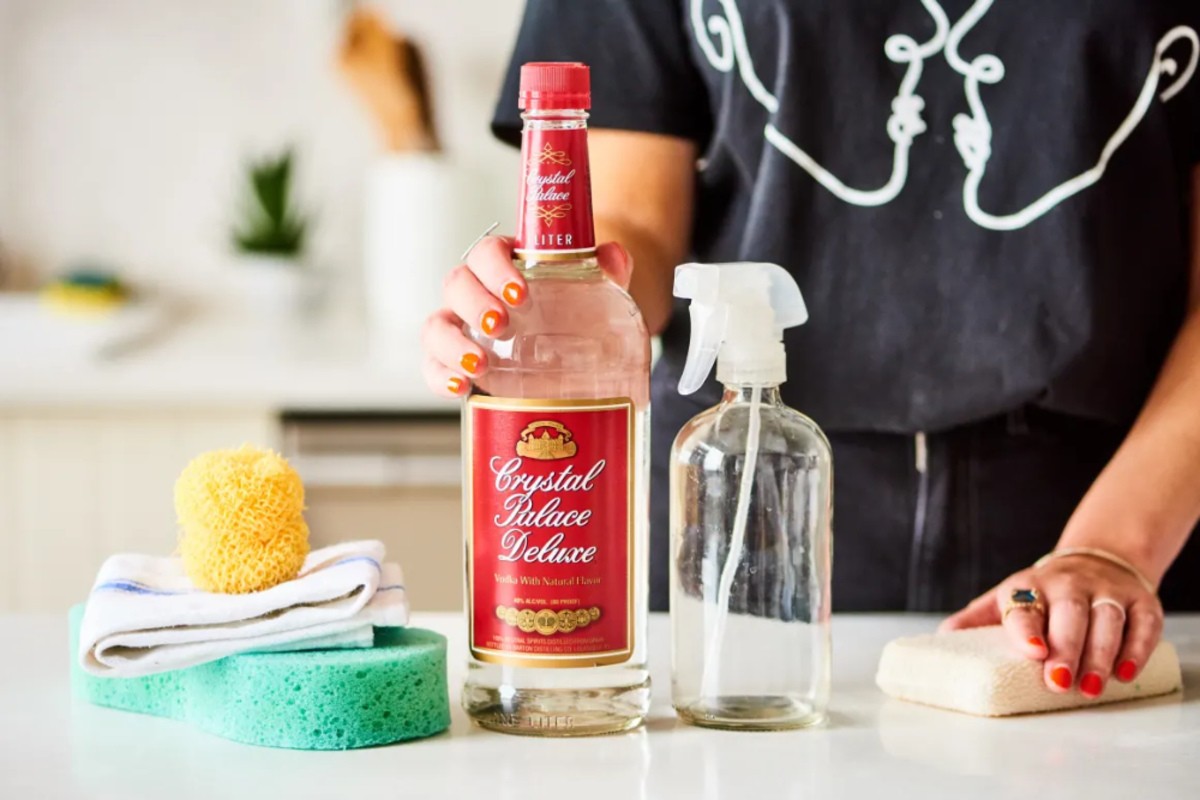

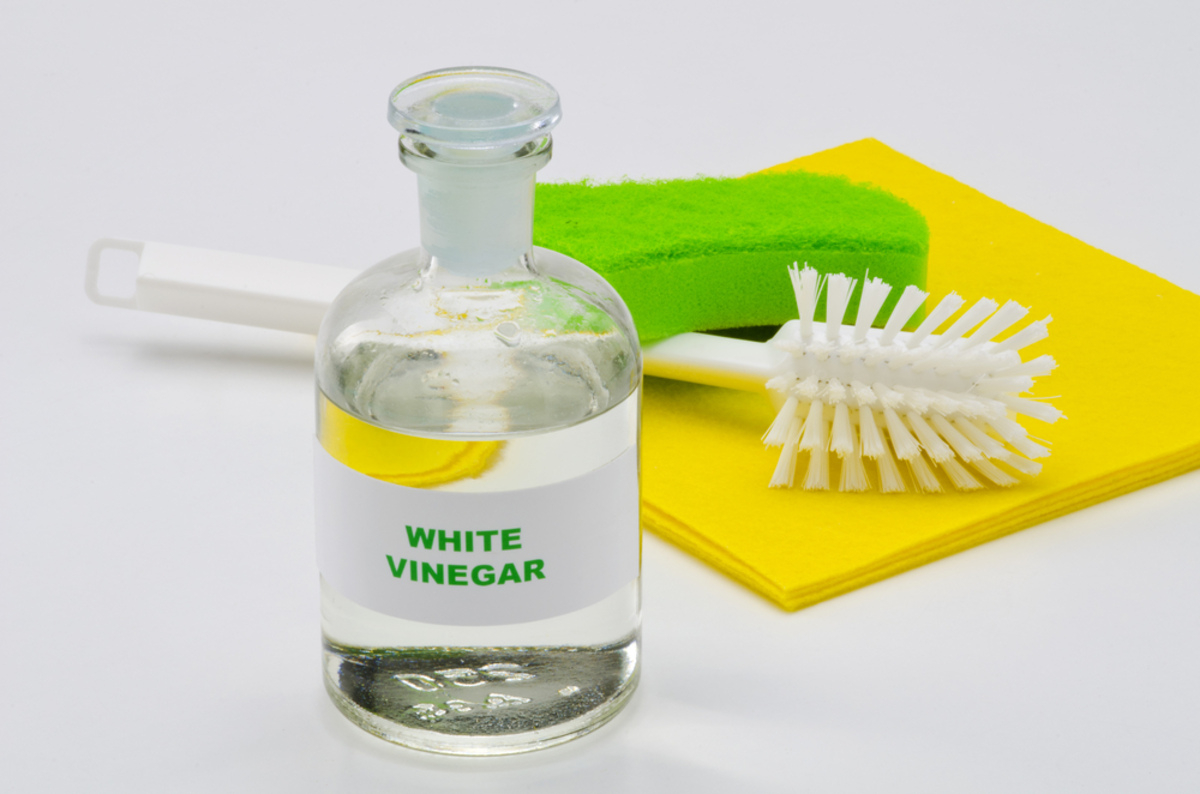
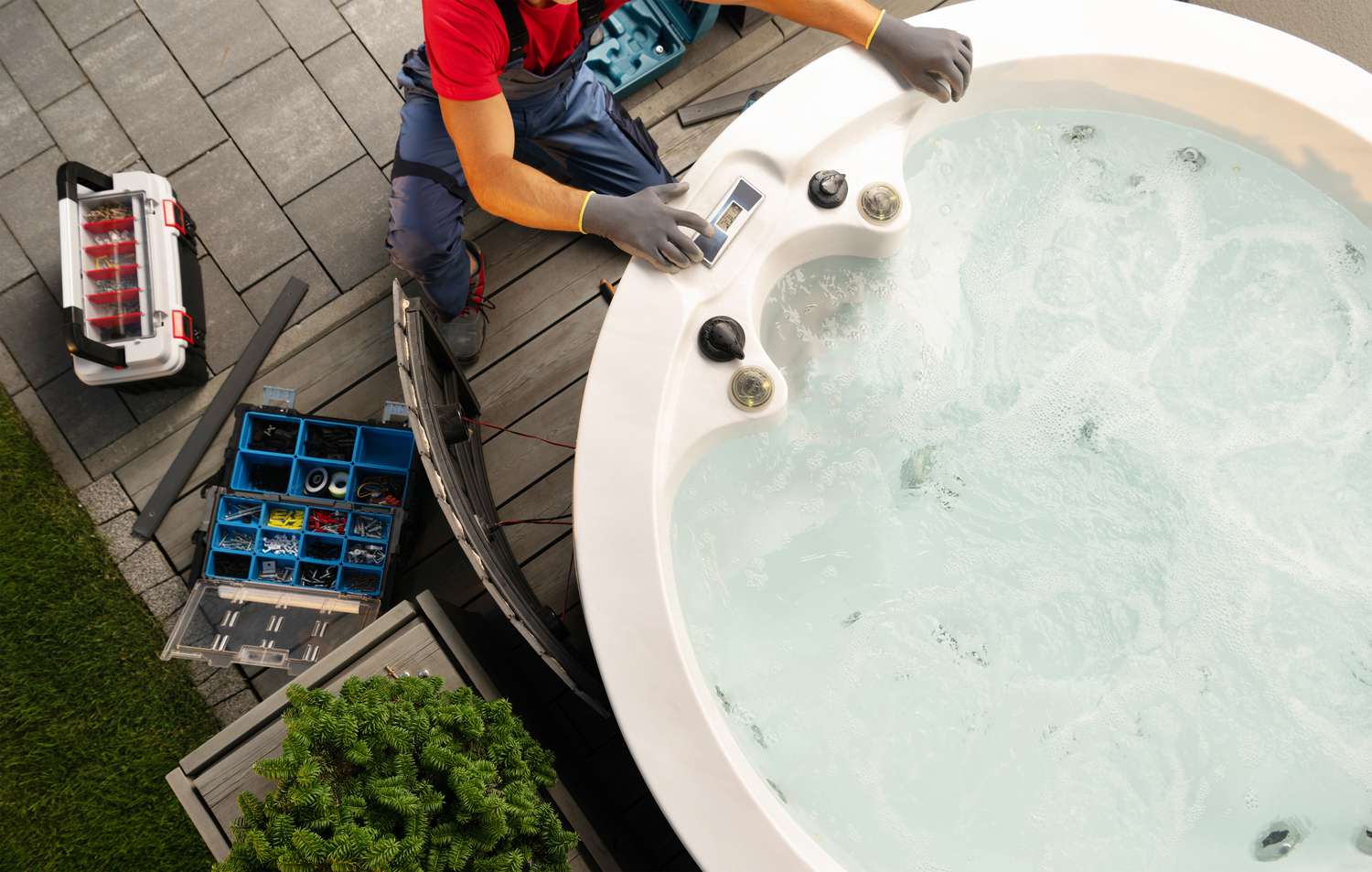
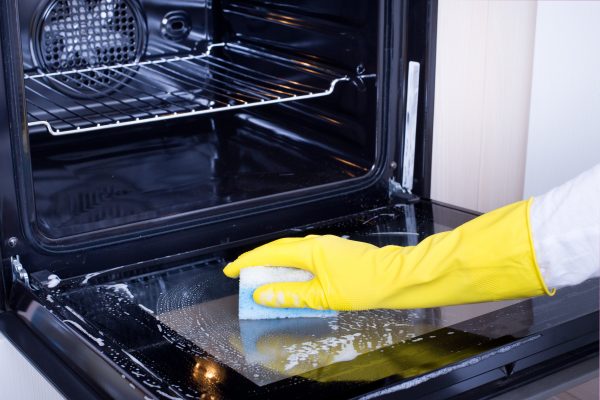
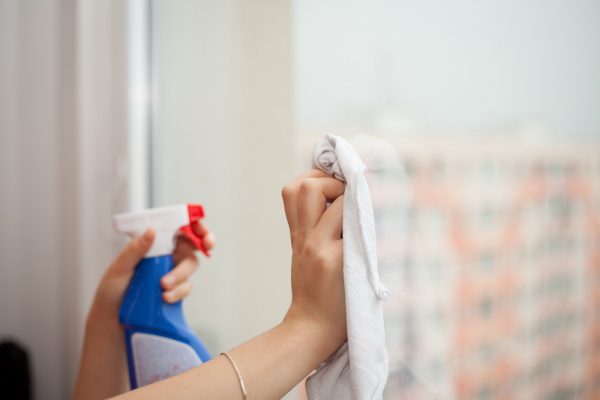
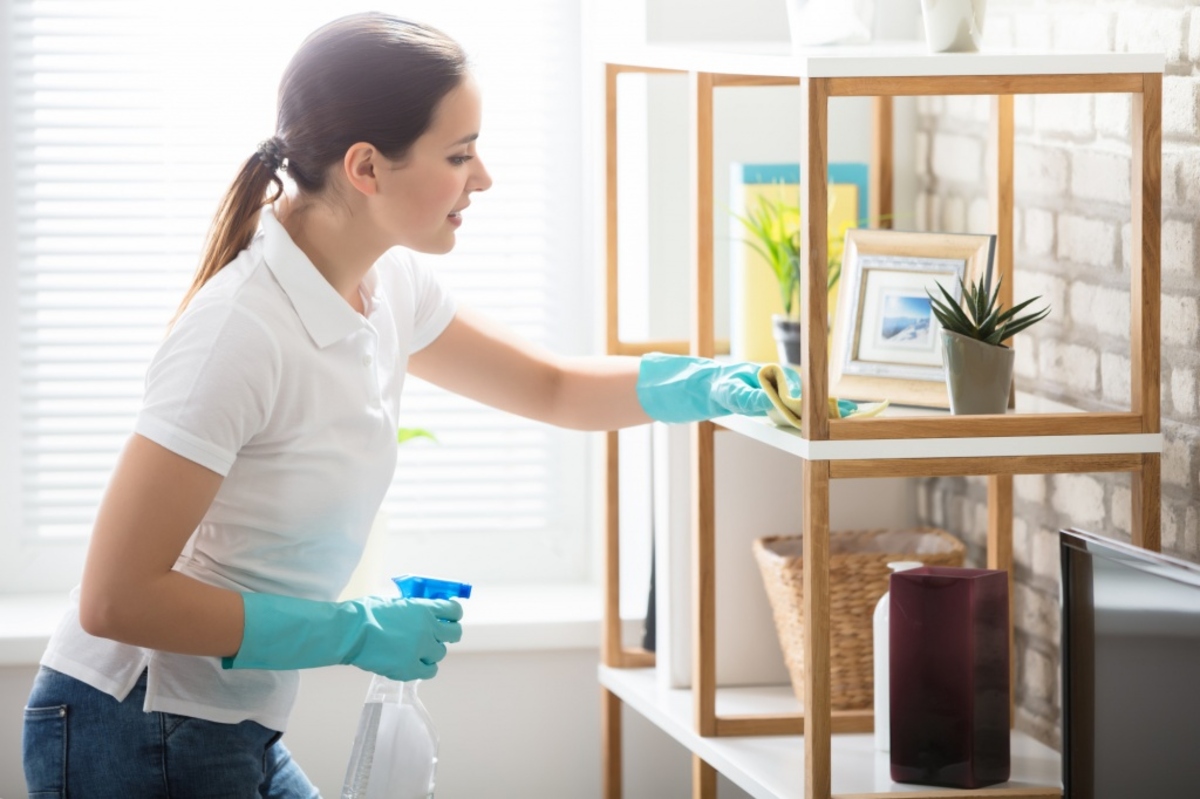

0 thoughts on “14 Easy Cleaning Habits You Can Start Today For A Spotless Home”